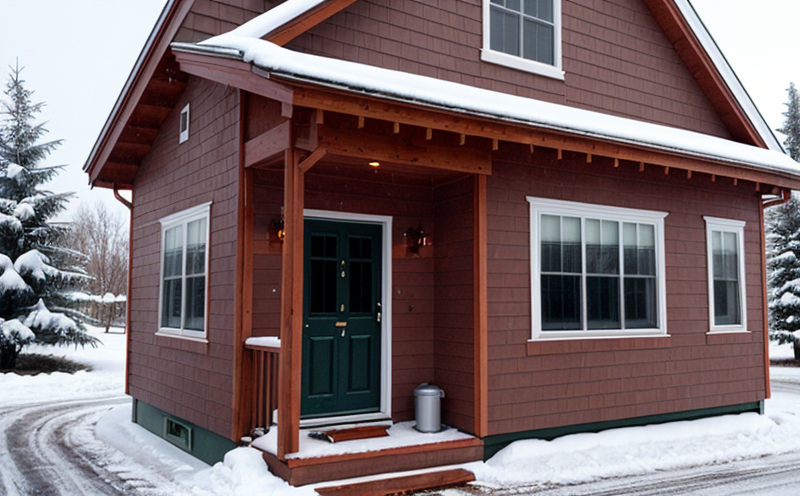BS EN 13779 Part 3 Seasonal System Performance
The BS EN 13779 Part 3 standard defines the method for determining the seasonal system performance of HVAC equipment. This test is crucial in ensuring that heating, ventilation, and air conditioning (HVAC) systems operate efficiently over extended periods, which is especially important given the increasing focus on energy efficiency within the sector.
Seasonal system performance testing aims to simulate real-world conditions by measuring a system's overall efficiency throughout typical operating cycles. This includes both heating and cooling phases, providing a more accurate representation of actual field performance compared to static test conditions.
The standard specifies detailed procedures for setting up and conducting the tests, which are designed to replicate the operational conditions that HVAC systems encounter during seasonal changes. For instance, it accounts for variations in outdoor air temperature, humidity levels, and indoor load requirements throughout the year.
To perform these tests correctly, specialized equipment is required, including climate chambers capable of simulating wide ranges of temperatures and humidities. The test setup involves configuring the HVAC system to function as it would in a typical installation environment, ensuring that all components operate under realistic conditions.
The testing process begins by calibrating all measurement instruments according to ISO/IEC 17025 standards. This ensures consistent and accurate data collection throughout the test duration. Once calibration is complete, the system undergoes a series of performance tests at different stages of the season, capturing both heating and cooling modes.
During each stage, key parameters such as energy consumption, airflow rates, temperature distribution, and humidity levels are meticulously recorded. These metrics provide critical insights into how efficiently the HVAC equipment operates under varying conditions, allowing for precise comparisons against established performance criteria.
The results of these tests are then analyzed to determine compliance with BS EN 13779 Part 3 requirements. Compliance is determined not only by meeting specified energy efficiency targets but also by ensuring that all measured values fall within allowable ranges defined in the standard. This comprehensive evaluation process helps identify areas where improvements can be made, thereby enhancing overall system performance.
It’s important to note that accurate and consistent data collection is paramount for reliable testing outcomes. Therefore, strict adherence to procedural guidelines and use of high-precision instruments are essential steps in achieving valid results. By leveraging advanced technology solutions during the test execution phase, we ensure precision and repeatability, which contribute significantly towards achieving robust and actionable insights.
For quality managers and compliance officers seeking to verify that their HVAC equipment meets stringent performance benchmarks, this testing procedure offers an invaluable tool. It provides a standardized approach to assessing system efficiency across multiple variables, enabling informed decision-making regarding potential upgrades or modifications aimed at improving operational effectiveness.
| System Component | Tested Parameters |
|---|---|
| Air Handling Units (AHUs) | Energy efficiency, airflow rates, static pressure drop |
| Refrigeration Systems | Cooling capacity, energy consumption, coefficient of performance |
| Ductwork and Insulation | Airflow resistance, thermal conductance |
Benefits
- Compliance with international standards ensuring reliable performance.
- Identification of areas for improvement through detailed analysis of test results.
- Enhanced reputation among customers and stakeholders by demonstrating commitment to quality and sustainability.
- Potential cost savings due to optimized system operation leading to reduced energy consumption.
Industry Applications
This testing method finds application across various industries where HVAC systems play a crucial role in maintaining optimal indoor environments. Notably, it is widely used in commercial buildings such as offices, shopping centers, hotels, and hospitals to ensure that these facilities maintain comfortable temperatures while minimizing energy costs.
| Industry Sector | Specific Applications |
|---|---|
| Commercial Real Estate | Office buildings, retail spaces, hospitality venues. |
| Hospitality | Hotels, resorts, conference centers. |
| Healthcare | Hospitals, clinics, pharmacies. |
Eurolab Advantages
At Eurolab, our extensive experience in HVAC equipment testing allows us to offer unparalleled expertise and precision when it comes to BS EN 13779 Part 3 Seasonal System Performance tests. Leveraging state-of-the-art facilities equipped with cutting-edge technology ensures that we deliver accurate and reliable results every time.
Our team of highly qualified professionals adheres strictly to procedural guidelines laid out in the standard, ensuring consistency across all test executions. This commitment to quality control guarantees that each measurement point is captured accurately, contributing to robust conclusions drawn from the data collected during testing.
We pride ourselves on providing comprehensive support throughout every stage of the testing process, from initial consultation to final report delivery. Our goal is not just to meet but exceed client expectations by offering personalized service tailored specifically to individual needs.





